Miami Home Prices Down 18% Since Peak, Realtor.com Reports
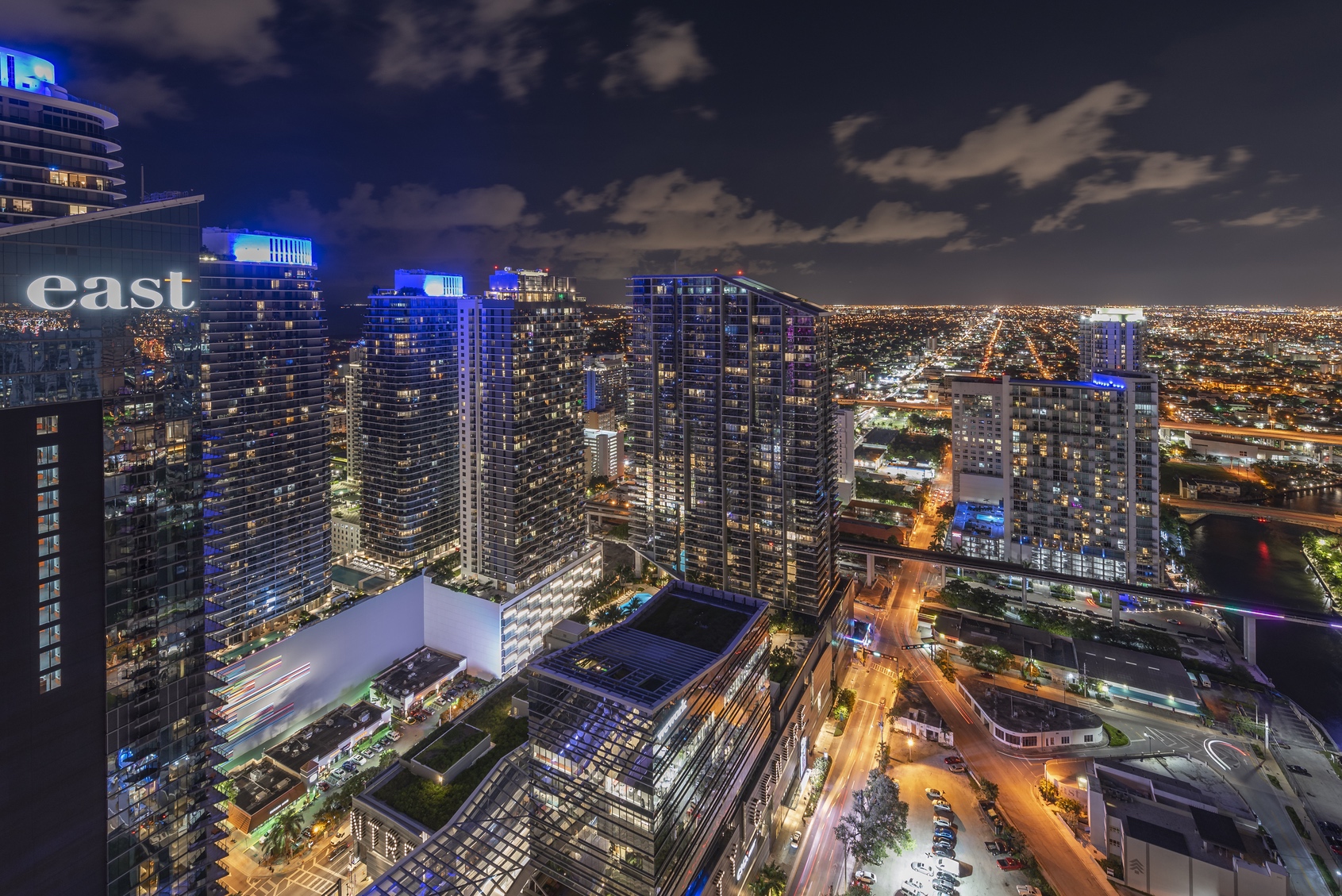

According to a new housing report released today by Realtor.com, Miami stands out as one of the U.S. metros experiencing the steepest year-over-year declines in home prices. The national real estate platform analyzed data from the 50 largest metropolitan areas in the country and found that while home prices across the U.S. remain relatively stable overall, regional disparities are growing wider. Miami, in particular, has seen a significant pullback, with its median list price dropping nearly 18% since peaking in July 2022. This marks one of the largest three-year price corrections among all major U.S. housing markets.
In July 2025, Miami’s real estate market continued to soften, with homes taking longer to sell and more sellers adjusting their expectations. The report notes that properties in Miami are now sitting on the market an average of 16 days longer compared to this time last year, reflecting a shift in supply-demand dynamics. While the national median list price held steady year-over-year, Miami saw a sharp decline, driven by waning buyer urgency, rising insurance premiums, and lingering affordability challenges. Additionally, the percentage of homes with price reductions increased nationwide, with 20.6% of active listings featuring a cut in July. This trend is especially pronounced in the South and West, where cities like Miami, Austin, Tampa, and Phoenix continue to recalibrate from their pandemic-era highs.
One notable factor behind Miami’s price correction is the growing pressure on the condo segment. Condominiums represent a large portion of Miami’s housing inventory, particularly in the urban core and waterfront neighborhoods. Rising insurance costs, heightened HOA dues, and new regulatory changes affecting older buildings have all contributed to weakening demand in this category. As a result, many condo sellers are either reducing their prices or choosing to temporarily delist their properties. According to Realtor.com’s data, delistings have surged 47% year-over-year nationwide as sellers in slower markets pull back, unwilling to compromise on pricing in a changing environment.
For prospective buyers in Miami, the current market presents a window of opportunity. Inventory levels have returned to or exceeded pre-pandemic levels in many parts of the metro, giving buyers more choices and stronger negotiating power. This environment is particularly advantageous for those willing to act while prices remain soft and competition is muted. On the flip side, sellers who remain anchored to 2022 pricing may struggle to attract offers unless they adjust to today’s market realities. In some cases, sellers are opting to withdraw their listings and wait for a potential market rebound in the future.
In summary, Miami remains one of the most closely watched housing markets in the nation due to its dramatic price swings and unique inventory composition. As of July 2025, the metro’s median list prices have fallen nearly 18% from their peak, properties are sitting longer, and sellers are increasingly forced to adjust or step back. While this represents a challenge for some, it may also signal a healthy rebalancing—one that could open new doors for well-prepared buyers. Whether this trend continues into the busy fall season will depend on interest rates, insurance reforms, and broader economic sentiment.
Lionel Messi to Extend Inter Miami Contract Through 2028, Reports Say


In a major development for Major League Soccer and Miami sports fans, Lionel Messi is reportedly set to extend his contract with Inter Miami through December 2028, according to multiple sources. The Argentine superstar, who joined the club in July 2023, would be 41 years old when the new deal expires.
Messi’s extended stay is a massive win for both Inter Miami and MLS, further solidifying the league’s global relevance and Miami’s growing stature as a premier destination for world-class athletes. Since his arrival, Messi has transformed the club’s fortunes on and off the pitch—helping Inter Miami secure its first-ever trophy and drawing record-breaking crowds, viewership numbers, and commercial deals.
This new contract reportedly keeps Messi tied to Inter Miami for an additional three seasons beyond his current agreement, which was originally set to expire at the end of 2025. The extension would ensure that Messi continues to be a central figure during the anticipated debut of Miami Freedom Park, Inter Miami’s new 25,000-seat stadium expected to open in 2026.
The news also hints at Messi’s long-term commitment to shaping soccer in the United States. His continued presence could be pivotal for the 2026 FIFA World Cup, which the U.S. will co-host alongside Mexico and Canada, offering a perfect stage for Messi to act as a cultural ambassador of the sport.
While Inter Miami has yet to make an official announcement, the reports mark a thrilling chapter for South Florida sports. With Lionel Messi in pink and black until 2028, fans can expect more unforgettable moments—and an even brighter spotlight on Miami’s global influence.
Florida Expands Back-to-School Sales Tax Holiday to Full Month of August


Florida families will see major relief this back-to-school season thanks to a newly expanded and now permanent month-long sales tax holiday, announced by Governor Ron DeSantis. Starting August 1 and running through August 31, 2025, Floridians will not pay state sales tax on a wide variety of school-related and tech items, marking a significant expansion of what had previously been a shorter-term holiday. This change, enacted as part of the state’s $2 billion tax relief package, aims to reduce the financial burden of back-to-school shopping while boosting retail activity statewide.
During the holiday, shoppers can purchase a range of qualifying items tax-free. This includes school supplies priced at $50 or less per item, clothing and footwear priced at $100 or less per item, and learning aids or educational toys priced at $30 or less. Even bigger-ticket items qualify, such as personal computers and related accessories priced at $1,500 or less, provided they’re intended for non-commercial personal use. That means families can purchase laptops, tablets, monitors, printers, flash drives, and other essential tools without paying sales tax. However, smartphones, video game consoles, and similar entertainment electronics are excluded from the holiday.
This updated policy is part of a broader restructuring of Florida’s sales tax holidays under House Bill 7031. Instead of multiple short-term holidays scattered throughout the year, Florida will now feature two extended seasonal tax holidays: the newly permanent back-to-school holiday in August and a separate Hunting, Fishing, and Camping Sales Tax Holiday set to run from September 8 through December 31, 2025. These changes are designed to simplify the system while delivering more impactful savings to residents. The back-to-school holiday alone is expected to generate $450 million in tax savings as part of the larger budget plan for the 2025–2026 fiscal year.
Governor DeSantis emphasized that the month-long holiday gives families more flexibility to plan their purchases without having to rush into a narrow time window. Retailers across the state, including big-box chains and local stores, are also preparing to offer special promotions aligned with the tax holiday. According to Lorena Holley, vice president and general counsel of the Florida Retail Federation, the extension of the holiday is expected to significantly boost foot traffic and help families stretch their budgets during one of the most financially demanding times of the year.
While the program has received widespread support, some tax policy experts caution that sales tax holidays tend to disproportionately benefit higher-income households, who are better positioned to make large purchases during promotional periods. Still, supporters argue that Florida’s expanded holiday provides more consistent and predictable relief than in previous years—especially for essential purchases like laptops, uniforms, and educational supplies that directly support student learning and preparedness.
Florida’s effective sales tax rate can exceed 7% in many counties when local surtaxes are included, making the potential savings substantial. For example, a family spending $1,500 on a tax-exempt laptop and $500 on school supplies and clothing could save more than $140 during the month of August. These savings, paired with strategic shopping, make the extended holiday a welcome development for both families and small businesses.
In summary, Florida’s newly restructured Back-to-School Sales Tax Holiday now runs every August, offering substantial, month-long savings on essential school items, clothing, tech, and more. The move signals a long-term shift in how the state delivers tax relief and reaffirms Florida’s commitment to supporting families during key seasonal spending periods.
Uber-Rich Continue Spending as Surf Club Four Seasons Racks Up $74M in Sales This Month Alone
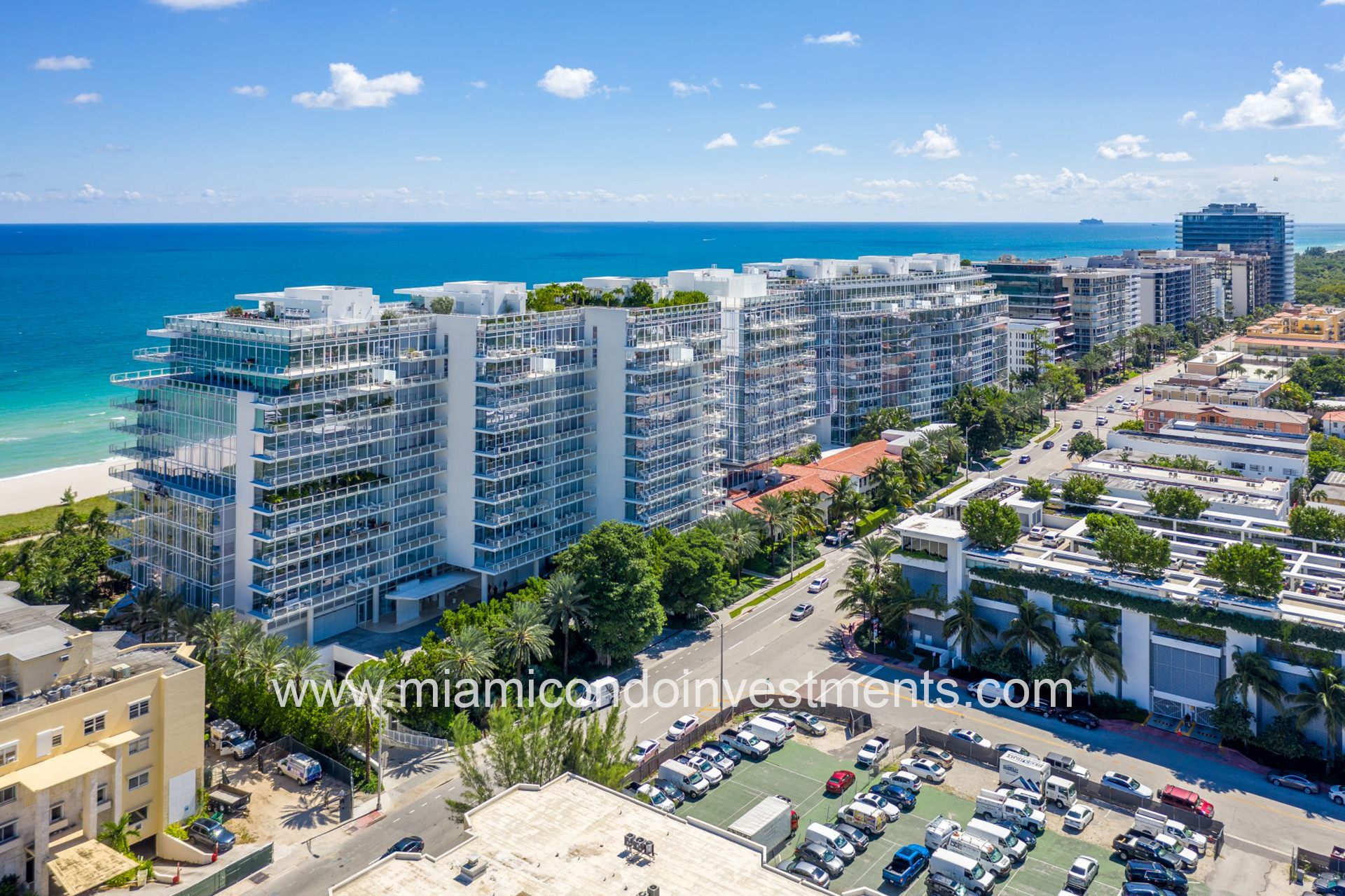

While South Florida’s broader real estate market has slowed considerably this summer, the ultra-luxury segment continues to operate in a different stratosphere. Case in point: this month alone, three condos at The Surf Club Four Seasons in Surfside sold for a staggering combined total of $74,300,000, underscoring how the world’s wealthiest continue to target Miami’s most prestigious addresses—even in the midst of seasonal market doldrums.
The biggest of the three transactions was a record-setting purchase in the South Tower of The Surf Club Four Seasons. On July 25, Daniel Nadler, a billionaire artificial intelligence entrepreneur and founder of the medical AI company OpenEvidence, paid $38,200,000 in cash for Penthouse S-PH2, according to The Wall Street Journal. The five-bedroom, 8.5-bathroom residence spans 5,675 interior square feet and sold for an eye-popping $6,731 per square foot. This marks Nadler’s first known real estate purchase in South Florida. Per WSJ, OpenEvidence is currently valued at $3.5 billion, making Nadler one of the newest billionaire buyers to invest in Miami’s high-end property market.
Also closing on July 25 was Unit S-1003, another South Tower residence, which traded for $18,350,000, or $4,333 per square foot. The 4-bedroom, 5.5-bathroom unit spans 4,235 interior square feet and was represented by Compass’s Miltiadis Kastanis on the listing side and Bryan Halda of Gray & Associates for the buyer. The identity of the buyer has not been publicly disclosed.
Earlier in the month, on July 14, Unit N-719 in the North Tower sold for $17,750,000, or $5,267 per square foot. This 3-bedroom, 3-bath, 2 half-bath condo spans 3,370 interior square feet. The buyer in that transaction has also not yet been disclosed in public records.
These blockbuster deals highlight a persistent trend in the Miami real estate market: while activity in the mid-range and even general luxury sectors has cooled, the ultra-luxury market remains on fire, fueled by global billionaires, low inventory, and a continued flight to quality in legacy-branded properties.
Developed by Fort Partners and operated by Four Seasons Hotels and Resorts, The Surf Club Four Seasons has become a magnet for the ultra-wealthy, blending historic charm with contemporary beachfront luxury. The development’s consistent demand—and ability to command record-breaking price-per-square-foot figures—is a testament to Miami’s growing status as a global destination for elite real estate investment.
Mexican-Inspired Steakhouse Toca Madera Coming Soon to Brickell
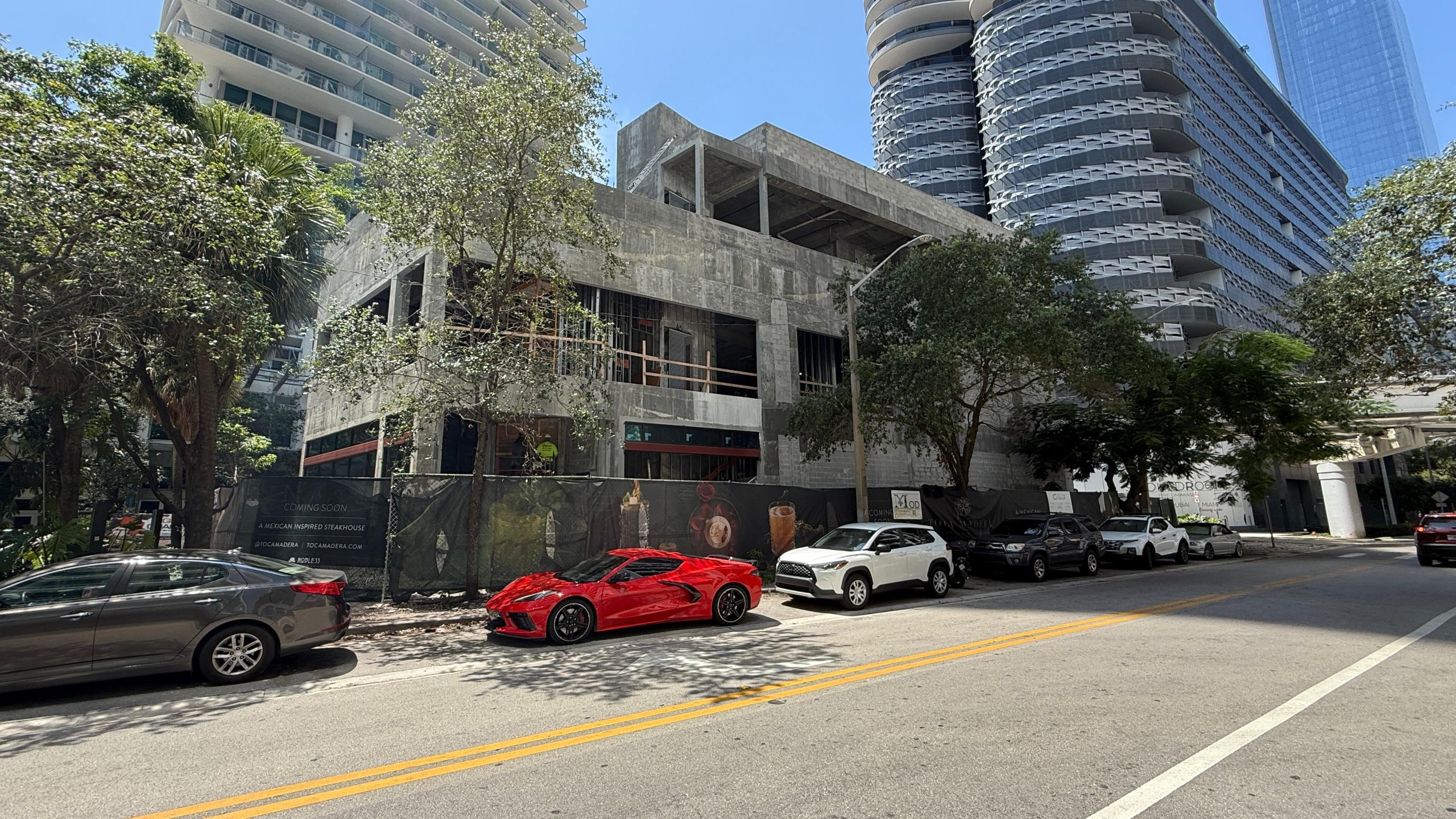

Amid Brickell’s already sizzling fine dining scene, a bold new player is preparing to make its debut: Toca Madera, a high-end, Mexican-inspired steakhouse from hospitality powerhouse Noble 33. The restaurant is rising from the ground up in a newly constructed three-story building directly south of the iconic Brickell Flatiron tower, as confirmed by signage on the construction fence.
Known for its sultry design, theatrical flair, and bold, elevated take on Mexican cuisine, Toca Madera has become a go-to destination in cities like West Hollywood, Las Vegas, and Scottsdale. The Brickell location will mark the brand’s first Miami location—but not Noble 33’s first foray into the Magic City. The hospitality group already operates two highly popular restaurants in Wynwood: Sparrow Italia, known for its coastal Italian flavors, and Casa Madera, an immersive, high-energy dining experience. Both have quickly gained traction among locals and visitors alike.
Toca Madera Brickell is being developed as a ground-up, three-story flagship restaurant—an increasingly rare move in a dense urban district where most eateries adapt existing spaces. The site itself carries historical significance: it was previously home to the sales gallery for Brickell Flatiron, the 64-story luxury condo tower developed by Ugo Colombo’s CMC Group. The gallery once served as a stylish pre-sales hub for what would become one of Brickell’s most architecturally distinctive towers. With the sales center gone and the lot cleared, the space has now been reimagined as one of the neighborhood’s most anticipated new dining destinations.
While details about the restaurant’s interior design and rooftop potential are still under wraps, Toca Madera is expected to follow the brand’s signature format—complete with dramatic lighting, immersive décor, handcrafted cocktails, and vibrant, upscale energy that often transitions seamlessly into nightlife. Given the building’s scale and positioning within the Brickell core, this new location is likely to become a hotspot for upscale dinners, evening celebrations, and weekend indulgence.
No official opening date has been announced, but construction appears to be progressing rapidly. As Noble 33 expands its Miami footprint, the arrival of Toca Madera promises to raise the bar for Brickell’s evolving dining landscape.
Demolition Underway at Future Site of 888 Brickell by Dolce & Gabbana
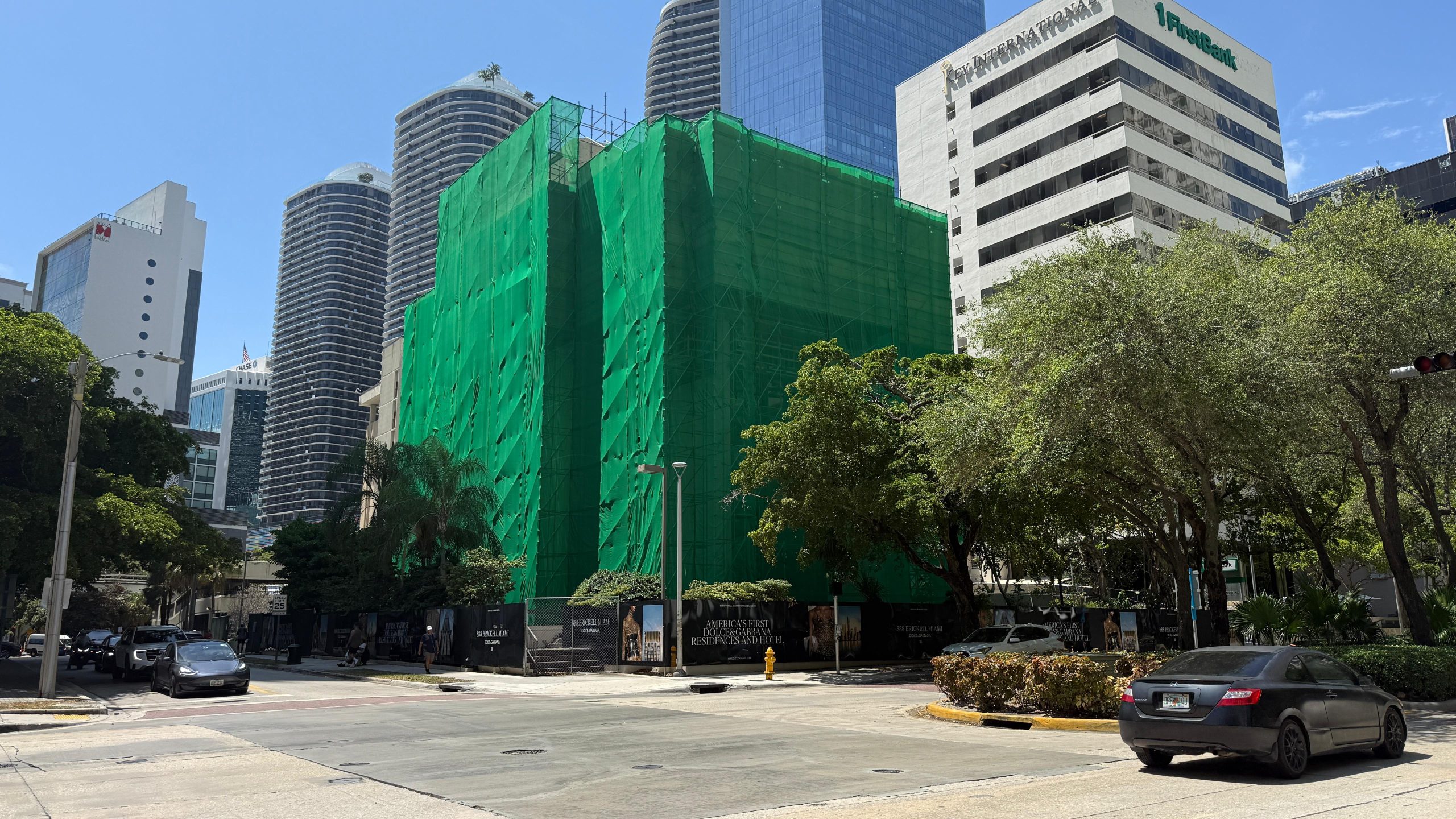

A major milestone has been reached for 888 Brickell by Dolce & Gabbana, one of Miami’s most anticipated ultra-luxury condo developments. Demolition has officially begun at 888 Brickell Avenue, where the existing building—now fully wrapped and prepped for teardown—will soon make way for what is set to become the tallest residential tower in Brickell. The start of demolition signals real momentum for this high-profile project, which has already generated significant buzz for its fashion-forward branding, sky-high amenities, and record-setting pricing.
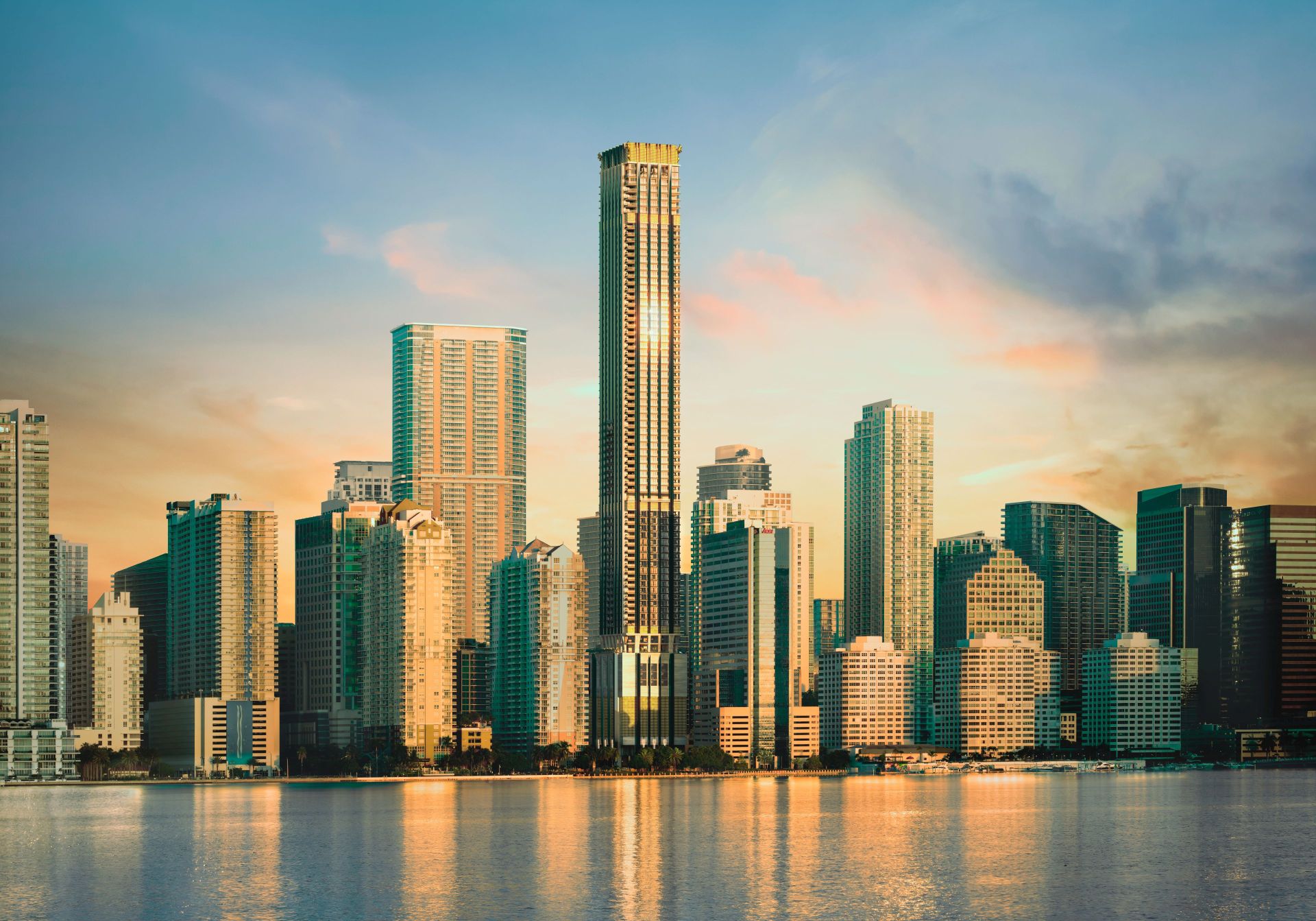
888 Brickell by Dolce & Gabbana is being developed by JDS Development Group, the New York–based firm behind other prominent South Florida ventures like Monad Terrace in Miami Beach. The tower will rise 1,049 feet and span 90 stories, establishing itself as a defining feature of the Brickell skyline. In a rare collaboration between high fashion and real estate, the project will be the first residential tower in the world fully branded and designed by Italian fashion house Dolce & Gabbana. The interiors, furnishings, and aesthetic direction of the residences and common spaces are being curated by the fashion label, infusing the building with signature opulence and craftsmanship.
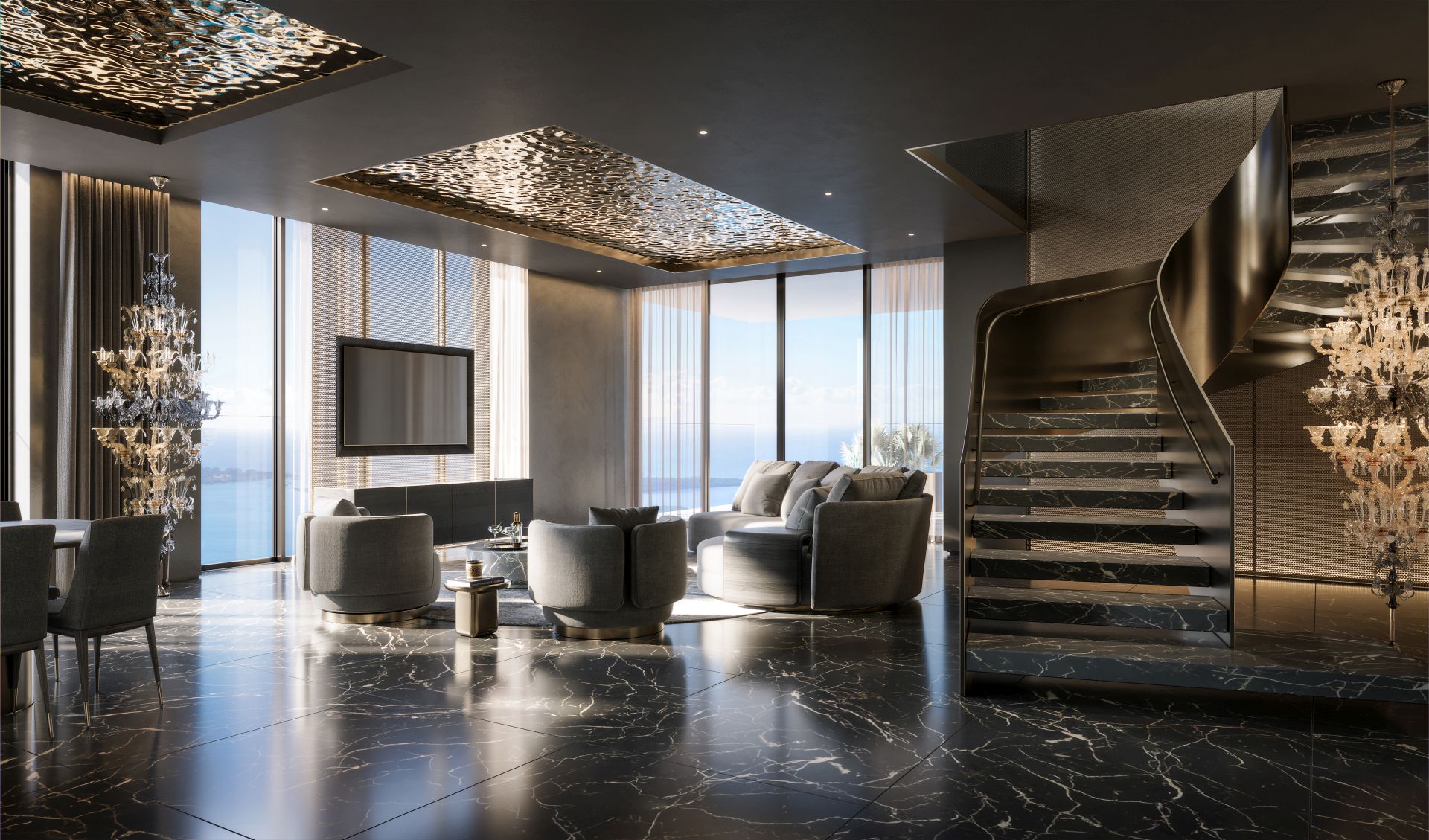
Architecture for 888 Brickell is being led by Miami-based Sieger Suarez Architects, working alongside Studio Sofield, known for its ultra-luxury designs including Manhattan’s 111 West 57th Street. The tower will offer 259 branded residences, along with a members-only club, full-service spa, gourmet restaurants, and an expansive pool deck with cabanas and ocean views. Units range from one to four bedrooms, with prices starting at $2.2 million and the 3-story, crown-jewel penthouse asking $88 million.
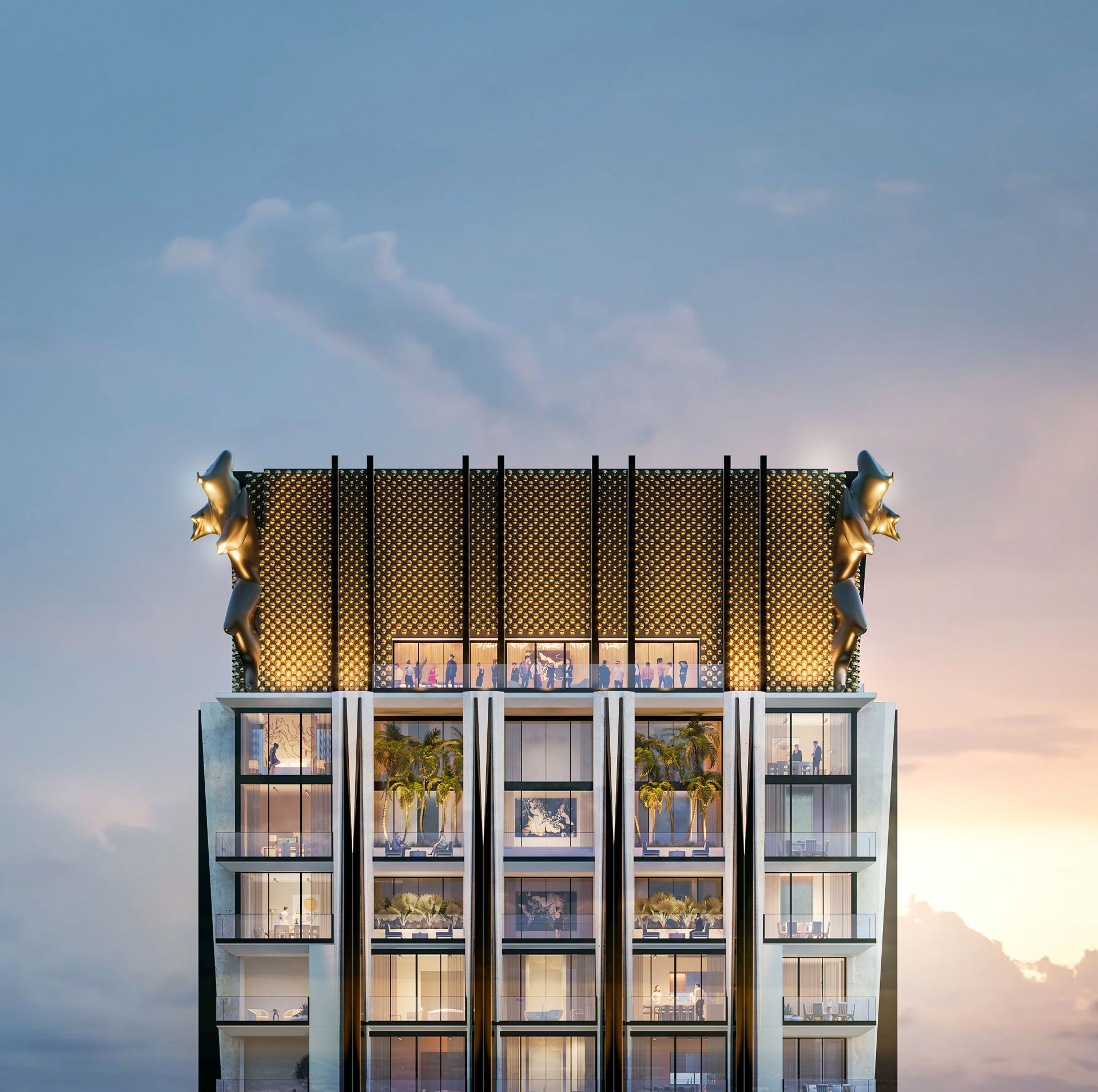
With demolition now underway, 888 Brickell by Dolce & Gabbana is one step closer to transforming this iconic stretch of Brickell Avenue. As vertical construction approaches, the tower promises to raise the bar for luxury living in Miami and establish a new benchmark for branded residential real estate.
Miami Condo Market Slump Worsens as Sales Drop and Inventory Surges
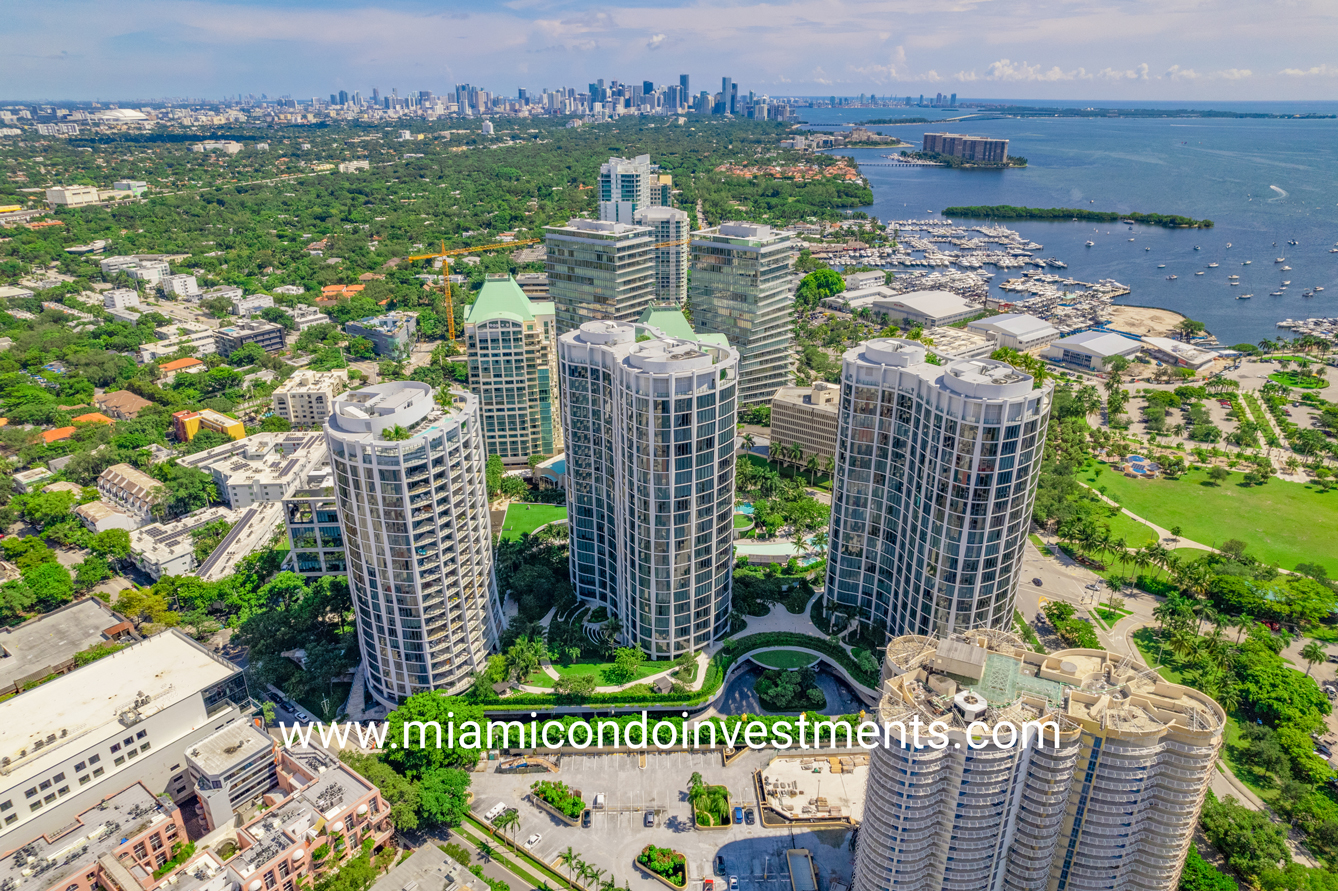

The latest condo market statistics for Miami-Dade County, released by the MIAMI Association of Realtors (MIAMI) and the MIAMI Southeast Florida Multiple Listing Service (SEFMLS), reflect a clear shift in market dynamics toward buyers. In June 2025, total existing condominium sales fell 12.9% year-over-year, dropping from 1,085 closed transactions in June 2024 to 945 last month. This marks a continued slowdown in demand as elevated mortgage rates, increased insurance costs, and tighter lending standards for certain buildings weigh on buyer activity.
At the same time, inventory continues to climb at a rapid pace. Miami-Dade condo listings surged 36.07% year-over-year, rising from 9,588 active listings in June 2024 to 13,046 in June 2025. With supply outpacing demand, the months of inventory for existing condos now sits at 14.1 months—well above the 6-to-9-month range typically considered a balanced market. The elevated inventory level gives buyers more options and greater leverage during negotiations, particularly in the mid-range and resale segments of the market.
While the surge in supply may present challenges for sellers, it also opens up opportunities for buyers who have been sitting on the sidelines. Units that are competitively priced, staged well, and located in buildings with healthy financials and flexible financing options are still attracting interest. However, sellers who fail to adjust to today’s more competitive landscape risk extended days on market and increased price reductions.
Overall, the June 2025 data underscores a notable turning point for the Miami condo market. With over 13,000 condos listed for sale and over a year’s worth of supply, the power has clearly shifted to buyers. Sellers looking to stand out must be strategic in pricing and presentation, while buyers now have a rare window to be selective, negotiate favorable terms, and find long-term value in a high-supply environment.
Booze on the Beach? Miami Beach Weighs Alcohol Pilot Program
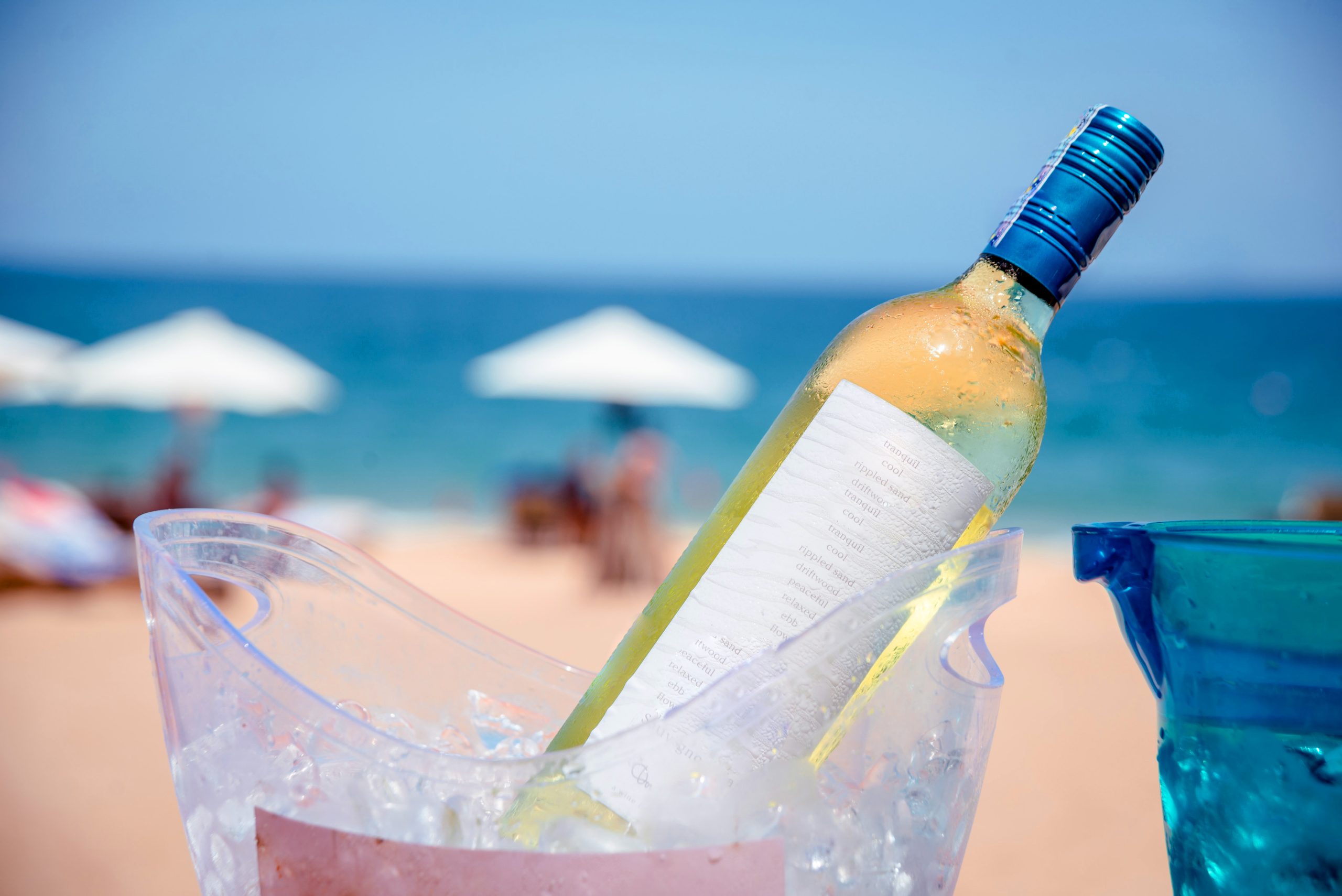

Miami Beach is weighing a proposal that could change the city’s relationship with its iconic shoreline—by allowing alcohol sales directly on the sand. The City Commission is considering a one-year pilot program that would permit regulated sales of beer, wine, and cocktails at designated beachfront kiosks. If approved, the program would authorize Boucher Brothers, the city’s longtime beach concessionaire, to serve alcoholic beverages at specific areas between Fifth and 14th Streets, as well as at 21st Street, during set hours from 11 a.m. to 6 p.m. daily.
The proposal aims to bring a level of control and oversight to a practice that already occurs unofficially. While drinking alcohol on the beach is currently prohibited, enforcement has been inconsistent, and many beachgoers routinely bring their own beverages. City officials hope the pilot program could reduce the prevalence of unregulated alcohol consumption and curb the activities of unauthorized vendors, while also creating a new revenue stream from beachfront concessions.
According to a city memo, the proposed agreement would generate substantial revenue for Miami Beach. The city would receive 18% of alcohol sales revenue up to $5 million and 20% of revenue beyond that, with a minimum guaranteed payment of $250,000 annually. In addition, the proposal includes potential monetary contributions to the Miami Beach Bandshell, helping fund local cultural programming.
Supporters of the initiative argue that it offers a pragmatic solution to a longstanding issue. By permitting sales in a controlled environment with licensed staff and clearly defined hours, the city can manage beach drinking more effectively while offering a premium amenity to tourists. Opponents, however, worry that formalizing alcohol sales could reinforce Miami Beach’s party-town image—something city leaders have worked hard to rebrand in recent years. Critics have also voiced concerns about public safety, noise, and the potential for increased rowdiness in family-friendly areas.
The decision now rests with the City Commission, which is expected to vote on the pilot program soon. If it moves forward, city staff will be required to submit quarterly reports detailing the program’s impact, including safety metrics, business activity, and public sentiment. These evaluations will help determine whether the policy should be expanded, modified, or discontinued after the one-year trial period.
This pilot represents a broader shift in how Miami Beach approaches its evolving identity—balancing the demands of tourism with the quality-of-life concerns of residents. It also highlights the city’s willingness to test creative solutions in pursuit of both economic growth and improved public management. Whether this experiment becomes a permanent fixture remains to be seen, but it signals Miami Beach’s openness to reimagining how its world-famous shoreline can serve both visitors and the local community.
8 South Florida Hotel Restaurants Make OpenTable & KAYAK’s Top 100 List


Hotel dining has officially entered a new era—one where travelers are booking stays not just for the rooms, but for the restaurants. According to OpenTable and KAYAK’s newly released Top 100 Hotel Restaurants in America, several standout eateries in South Florida are leading the charge, earning national acclaim for their exceptional cuisine and memorable experiences. The curated list, based on over 10 million OpenTable diner reviews from June 1, 2024, to May 31, 2025, celebrates a wide spectrum of culinary excellence—from opulent fine dining to breezy brunch spots.
Among the South Florida honorees, Gianni’s at the Former Versace Mansion in Miami Beach remains a favorite for both its storied setting and upscale Italian fare. Located in the heart of South Beach, Gianni’s offers an elegant, fashion-imbued dining experience that blends historic charm with modern luxury. Just north in Sunny Isles Beach, Il Mulino New York continues to impress with its refined Italian menu and beachfront sophistication, offering diners an indulgent escape with views to match the cuisine.
Another notable inclusion is Lido Restaurant at The Surf Club in Surfside, part of the Four Seasons Hotel. Lido exemplifies Mediterranean refinement in a timeless oceanfront setting and is a favorite among culinary travelers seeking coastal luxury. For a more laid-back yet flavor-packed experience, Limonada Bar + Brunch in Miami Beach delivers colorful décor, Latin-inspired dishes, and a festive brunch atmosphere that resonates with both tourists and locals. Not far from there, Palace in South Beach has built a reputation for its high-energy vibe, inclusive atmosphere, and modern American fare, making it a must-visit for anyone seeking a vibrant Miami dining experience. Also earning a spot on the prestigious Top 100 list is The Roof at Esmé, perched atop the boutique Esmé Hotel on Española Way. This intimate rooftop oasis blends coastal-Mediterranean flavors with boho-chic charm, offering curated cocktails, fresh seafood, and panoramic views of South Beach—ideal for sunset dinners or weekend brunches under the stars.
Venturing north to Delray Beach, Akira Back at The Ray Hotel stands out for its bold fusion of Korean and Peruvian flavors, crafted by Michelin-starred chef Akira Back. Its sleek interior and daring menu have made it a destination in its own right. Meanwhile, Henry’s Palm Beach offers classic American fare with a modern twist, catering to Palm Beach’s upscale crowd with timeless charm and warm hospitality.
According to the report, hotel restaurants are increasingly driving travel decisions. In fact, 47% of surveyed Americans admitted to choosing travel destinations based specifically on restaurant offerings. KAYAK’s data supports the trend, showing a 51% year-over-year increase in travelers filtering hotels by on-site dining options. Furthermore, 73% of travelers said an exceptional hotel dining experience would influence their decision to return—proof that memorable meals are now just as important as luxury accommodations.
For South Florida, these accolades signal more than just culinary excellence—they underscore the region’s growing role as a national dining destination. From the cultural fusion of Miami Beach to the refined palettes of Palm Beach, hotel restaurants across the region are setting new standards for hospitality and cuisine alike. Whether you’re a traveler looking to dine with a view or a local in search of a weekend splurge, these celebrated spots prove that hotel dining in South Florida is not just back—it’s better than ever.
![]()